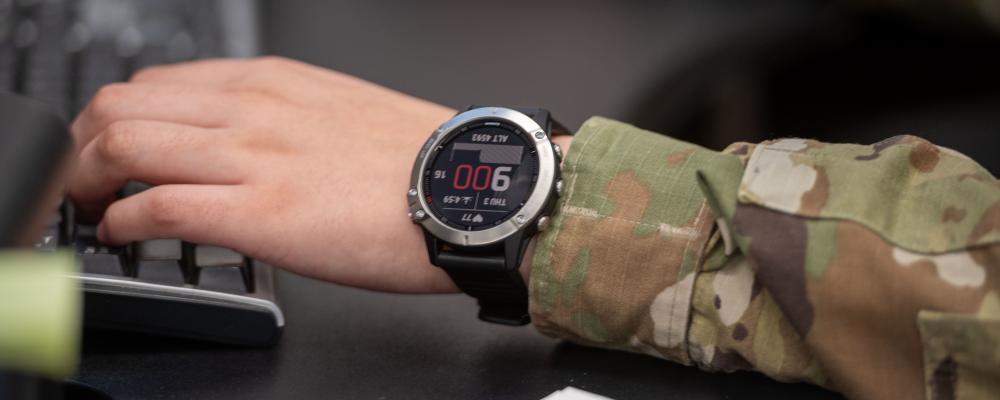
The Defense Innovation Unit, in partnership with the private sector, has developed a wearable device that was highly successful identifying infections during the COVID-19 pandemic.
The Department of Defense is now looking to expand the device's use to detecting other infectious diseases in service members, according to Jeff Schneider, program manager for the Rapid Assessment of Threat Exposure project.
Schneider added leaders say the device will aid the U.S. military with readiness nationwide.
DoD is now extending RATE — which initially started with the Defense Threat Reduction Agency in 2020 — to new user groups after leading a successful prototype during the COVID-19 pandemic.
RATE uses a powerful, predictive artificial intelligence algorithm that was trained using hospital-acquired data from monitored cases of COVID-19.
The algorithm leverages biometric data from commercial grade off-the-shelf wearables.
RATE's algorithm enabled early detection of infectious diseases up to 48 hours before symptoms appeared.
The algorithm, which sometimes predicted infections up to six days before onset, including asymptomatic cases, was featured in a 2022 study published by the journal Nature's Scientific Reports.
Schneider said the study highlighted the efficacy of algorithm-powered wearables to aid military readiness.
"With RATE, the DOD can use commercial wearables to noninvasively monitor a service member's health and provide early alerts to potential infection before it spreads," he said.
DoD's funding provides a bridge allowing the DIU to leverage RATE within a program of record.
RATE was one of the first 10 pilot programs funded through the Accelerate the Procurement and Fielding of Innovative Technologies initiative.
Established by Congress, APFIT aims to fill critical capability gaps.
With $10 million in additional funds, RATE will build on its 2020-21 success, which demonstrated that wearable technology could predict COVID-19 and other infections 2.3 days before diagnostic testing.
The effort was transitioned to DIU in 2022 to continue the project after RATE's initial success.
With the additional funding, DIU is adding 4,500 more users departmentwide.
One group will be the Air Combat Command's first sergeants.
The command's new Diamond Care Initiative Plan is geared toward preserving the health and welfare of its 360 first sergeants, who will be issued wearables to better gauge their overall health and vital signs, according to Air Force Maj. Michael Vernale.
"First sergeants serve as the belly button to all the organizations in the U.S. Air Force, and this technology can improve their lives and the lives of the airmen they serve," said Vernale, wing director of Talent Management and Assessments at Fort Meade, Maryland.
"Technology has finally produced a product that will increase overall health and wellness to a community of first sergeants who many times prioritize their people ahead of their own health," said Air Force Chief Master Sgt. Christopher Gradel, ACC.
Philips, a technology company, is involved in developing RATE's algorithm and has expanded its efforts on a global scale to accelerate commercialization and scaling.
Schneider noted RATE plans on being "device agnostic," but said the program's current deployment of wearables will include Garmin watches and Oura rings.
As the Philips-DIU team continues proving out the new dataflow, RATE aims to add three more popular wearable devices.
All 11,000 former RATE users will additionally be able to re-affiliate with the project if they still have the hardware.
The Food and Drug Administration has determined that RATE is classified as a general wellness device.
— By David Vergun, DoD News











